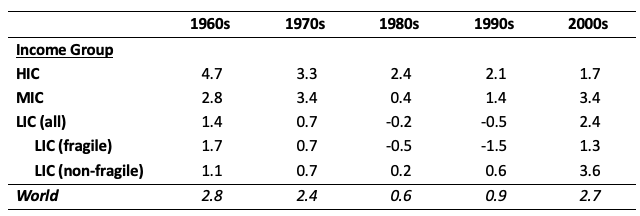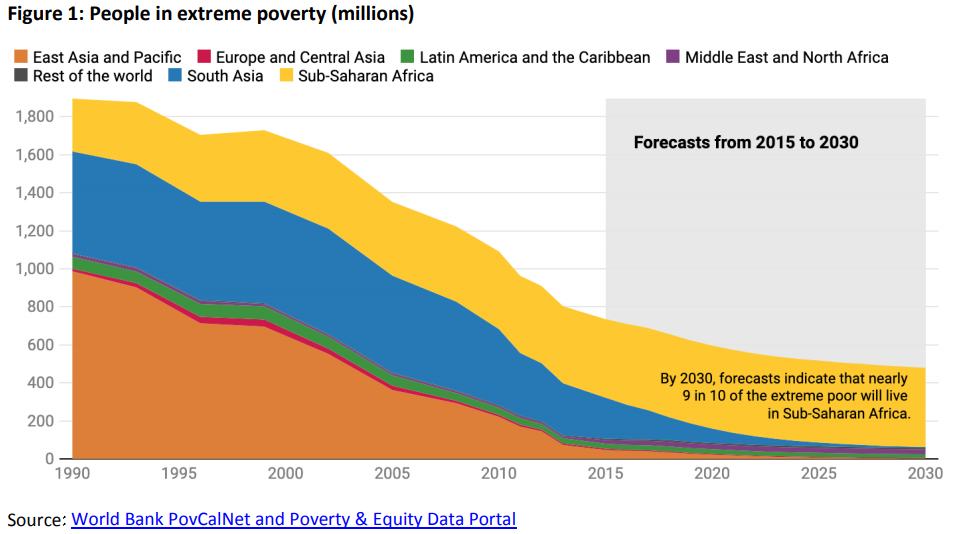Tuesday, April 16, 2019
The Captain Swing Riots; Workers and Threshing Machines in the 1830s
From a new post by Timothy Taylor:
“Between the summer of 1830 and the summer of 1832, riots swept through the English countryside. Over no more than two years, 3,000 riots broke out – by far the largest case of popular unrest in England since 1700. During the riots, rural laborers burned down farmhouses, expelled overseers of the poor and sent threatening letters to landlords and farmers signed by the mythical character known as Captain Swing. Most of all, workers attacked and destroyed threshing machines.”
“Here’s a figure showing locations of the Captain Swing riots. The authors [Bruno Caprettini and Joachim Voth (2018)] collect evidence about where threshing machines were being adopted based on newspaper advertisements for the sale of farms–which listed threshing machines at the farm as well as other property included with the sale. They show a correlation between the presence of more threshing machines and rioting. But as always, correlation doesn’t necessarily mean causation. For example, perhaps areas where local workers were already more rebellious and uncooperative were more likely to adopt threshing machines, and the riots that followed only show why local farmers didn’t want to deal with their local workers.
Thus, the authors also collect evidence on what areas were especially good soil for wheat, which makes using a thresher more likely, and what areas had water-power available to run threshers. it turns out that these areas are also where the threshers were more likely to be adopted. So a more plausible explanation seems to be that the new technology was adopted where it was most likely to be effective, not because of pre-existing local stroppiness.”
From a new post by Timothy Taylor:
“Between the summer of 1830 and the summer of 1832, riots swept through the English countryside. Over no more than two years, 3,000 riots broke out – by far the largest case of popular unrest in England since 1700. During the riots, rural laborers burned down farmhouses, expelled overseers of the poor and sent threatening letters to landlords and farmers signed by the mythical character known as Captain Swing.
Posted by at 2:58 PM
Labels: Inclusive Growth
It’s too soon for optimism about convergence
From VoxEU post by Paul Johnson and Chris Papageorgiou:
“The recent wave of growth in several developing economies has led to many analysts to claim that poorer countries are catching up with advanced economies. This column argues that, with the exception of a few countries in Asia which exhibited transformational growth, most of the economic achievements in developing economies have been the result of removing inefficiencies which are merely one-off level effects. While these effects are not unimportant and are necessary in the process of development, they do not imply ongoing economic growth.
In the past 50 years or so, the gap between average living standards in the poorest countries of the world and those in the richest countries has grown markedly. This unwelcome change is contrary to the proposition that less advanced economies ought to be able to catch up to more advanced economies through capital accumulation and technology transfer. Although the proposition wasn’t new, Abramowitz’s (1986) and Baumol’s (1986) examinations of its veracity as a negative correlation between initial per capita income levels and subsequent growth in per capita income, initiated a vast literature testing the so-called convergence hypothesis.1 Following Barro and Sala-i-Martin (1990), the catch-up approach to the convergence hypothesis became known as β-convergence.2
Table 1 provides some insight into what has driven the widening gap between the poorest countries and the richest countries. It shows decadal average per capita GDP growth rates for low, upper-middle, and high-income countries (LICs, MICs, and HICs respectively) over the 50-year period from 1960 to 2010.
Table 1 Decadal average per capita GDP growth (%) by income
Notes: This table is an abridged version of Table 2 in Johnson and Papageorgiou (2018) where data sources and other details are given. There are 29 HICs, 68 MICs, and 51 LICs. Appendix Table A.1 in Johnson and Papageorgiou (2018) lists the countries in each group.
Despite the slowdown in their average growth rates over this period, the HICs have typically grown more quickly than the MICs, which in turn have grown more quickly than the LICs. These differences are the exact opposite of the pattern required for catching up to be observed, and so it is hardly a surprise that the dispersion of per capita GDP across countries has grown markedly since 1960. This growth is documented in Figure 1, which plots the standard deviation of the cross-country distribution of GDP per capita for a constant group of countries from 1960 to 2010 and shows that, apart from a small decline in the very late 2000s, the dispersion has risen steadily since 1960.
In addition to lagging that of the HICs and MICs, the growth experience of the poorest countries from 1960 to 2010 has been heterogeneous, both across countries and over time. Table 1 shows that the LICs experienced a continuous decline in growth rates in every decade from the 1960s to the 1990s, with negative growth rates in the 1980s and 1990s, before the surprising and unprecedented resurgence of growth in the 2000s. The MICs saw a similar resurgence in the 2000s although their slowing in the 1980s did not produce the negative growth rates experienced in the LICs.
Table 1 also makes the distinction between what are commonly called fragile and non-fragile LICs. Fragile states are those facing political frailty, characterised by weak institutional capacity, poor governance, corruption, and conflict. This distinction illuminates the marked differences in the growth experiences of the fragile LICs and the non-fragile of LICs, most notably in the 1990s and 2000s when the annual average growth rates differ by over 2 percentage points. That is, while there is a lot of optimism over the most recent growth acceleration in LICs, aggregating their experience masks the fact that only about half of the LICs are contributing to the resurgence while the rest are stagnant.”
Continue reading here.
From VoxEU post by Paul Johnson and Chris Papageorgiou:
“The recent wave of growth in several developing economies has led to many analysts to claim that poorer countries are catching up with advanced economies. This column argues that, with the exception of a few countries in Asia which exhibited transformational growth, most of the economic achievements in developing economies have been the result of removing inefficiencies which are merely one-off level effects.
Posted by at 9:44 AM
Labels: Inclusive Growth
Monday, April 15, 2019
House Prices in Myanmar
From the IMF’s latest report on Myanmar:
“However, the near-term outlook has weakened. Economic growth is expected to remain below potential (…) in 2018/19 due to weakening export demand and subdued private construction activity related to the deleveraging by banks and corporates as real estate prices continue to correct from elevated levels.”
From the IMF’s latest report on Myanmar:
“However, the near-term outlook has weakened. Economic growth is expected to remain below potential (…) in 2018/19 due to weakening export demand and subdued private construction activity related to the deleveraging by banks and corporates as real estate prices continue to correct from elevated levels.”
Posted by at 9:50 AM
Labels: Global Housing Watch
Friday, April 12, 2019
Housing View – April 12, 2019
On cross-country:
- Residents’ revenge: how citizens are taking on city developers – Financial Times
- Global Residential Cities Index-Q4 2018 – Knight Frank
- Impact of weak substitution between owning and renting a dwelling on housing market – Journal of Housing and the Built Environment
- A new housing ecosystem: $3.8 trillion under one roof – McKinsey
On the US:
- The Coming Trump Housing Crisis – Wall Street Journal
- Young businesses are more vulnerable to housing market shocks – University of Chicago
- Netflix series hypes the Sunset Strip’s luxury real estate sizzle – Los Angeles Times
- Senate Confirms Trump Pick to Lead Housing-Finance Overhaul – Wall Street Journal
- The Political Battle Over California’s Suburban Dream – Citylab
- Housing Sentiment Surges Just in Time for Spring Homebuying Season – Fannie Mae
- Slowing U.S. Housing Sector Still Shaped by Great Recession – Federal Reserve Bank of St. Louis
- The Rise of the Radical Suburbs – Architect
- Chipping Away at the Mortgage Deduction – Wall Street Journal
On other countries:
- [Canada] Chinese Real-Estate Investors Wary of Vancouver Head to Toronto – Bloomberg
- [Canada] Canadian Home Building Rebounds From Deep Freeze: Housing Update – Bloomberg
- [China] China’s Easing of Residency Requirements Could Boost Cooling Property Market – Bloomberg
- [Czech Republic] Czech Republic’s housing structure – ING
- [Germany] Housing for the People – Jacobin
- [Hong Kong] Hong Kong plans to house 1 million people on artificial islands – World Economic Forum
- [Lithuania] Lithuania’s modest house price rises – Global Property Guide
- [Netherlands] ING: Expats and foreign students raise Amsterdam house prices – ING
- [Romania] Romania’s housing market cooling – Global Property Guide
- [Spain] Spain’s housing market continues to grow stronger – Global Property Guide
- [South Africa] Johannesburg’s hipster gentrification project is at risk of crumbling – Quartz
- [Sweden] Sweden’s house price boom is officially over – Global Property Guide
- [United Kingdom] Construction Sector: Modernisation and Sustainable Housing Supply – UK Parliament
- [United Kingdom] HBF Policy Conference 2019: ‘Confronting the housing crisis’, John Stewart memorial presentation – London School of Economics
On cross-country:
- Residents’ revenge: how citizens are taking on city developers – Financial Times
- Global Residential Cities Index-Q4 2018 – Knight Frank
- Impact of weak substitution between owning and renting a dwelling on housing market – Journal of Housing and the Built Environment
- A new housing ecosystem: $3.8 trillion under one roof – McKinsey
Posted by at 5:00 AM
Labels: Global Housing Watch
Thursday, April 11, 2019
Inclusive development in Africa
From a new INCLUDE report:
“While most African countries have registered high economic growth, a large number of people remain excluded from the benefits of this progress. INCLUDE envisages that inclusive development aims to reduce poverty, both in income and non-income dimensions, and inequality, through improved redistribution on these dimensions. Inclusive development is increasingly recognized as a must, since inequality is rising and the evidence base of the detrimental effect of high levels of inequality on economic growth and social and political stability is increasing. INCLUDE identified six policy domains that are key to reduce poverty and inequality:
- Economic growth with structural transformation of the economy.
- Productive employment; i.e. more jobs with good working conditions, remuneration and stability.
- Social protection for resilience, poverty reduction and sustainable economic growth.
- The provision of basic services (education, health, finance, infrastructure, housing, water, etc.).
- Territorial development and spatial equity (e.g. between rural and urban areas).
- Quality and inclusive governance, especially for poor minorities and other marginalized groups.
These policy domains are clearly interlinked and it is important to identify and empower strategic actors for effective and inclusive design and implementation of policies. Working with strategic actors and investing in these policy domains is however not sufficient. To move beyond pro-poor and pro-growth approaches towards inclusive approaches with more inclusive outcomes requires the consideration of three key areas:
- Equality: besides absolute improvements, policymakers should consider the distributional consequences of their policy choices. Evaluation mechanisms should therefore recognize the added
value of reducing inequality. - Diversity: considering distributional consequences helps to understand the heterogeneity in access to an realization of development outcomes. To move beyond the mere recognition of heterogeneity towards inclusive action, policymakers are encouraged to develop integrated policies where interventions complement each other to not only create improvements on average, but to also decrease inequality, even if this creates an ‘extra mile needed to reach the more difficult to reach.
- Context: to move beyond one-size-fits-all solutions, policies need to be aligned with local or regional contexts. Policies that fail to integrate with horizontal and vertical policy frameworks, and fail to identify and include strategic actors, are likely to promote exclusion rather than inclusion. “
From a new INCLUDE report:
“While most African countries have registered high economic growth, a large number of people remain excluded from the benefits of this progress. INCLUDE envisages that inclusive development aims to reduce poverty, both in income and non-income dimensions, and inequality, through improved redistribution on these dimensions. Inclusive development is increasingly recognized as a must, since inequality is rising and the evidence base of the detrimental effect of high levels of inequality on economic growth and social and political stability is increasing.
Posted by at 11:07 PM
Labels: Inclusive Growth
Subscribe to: Posts






